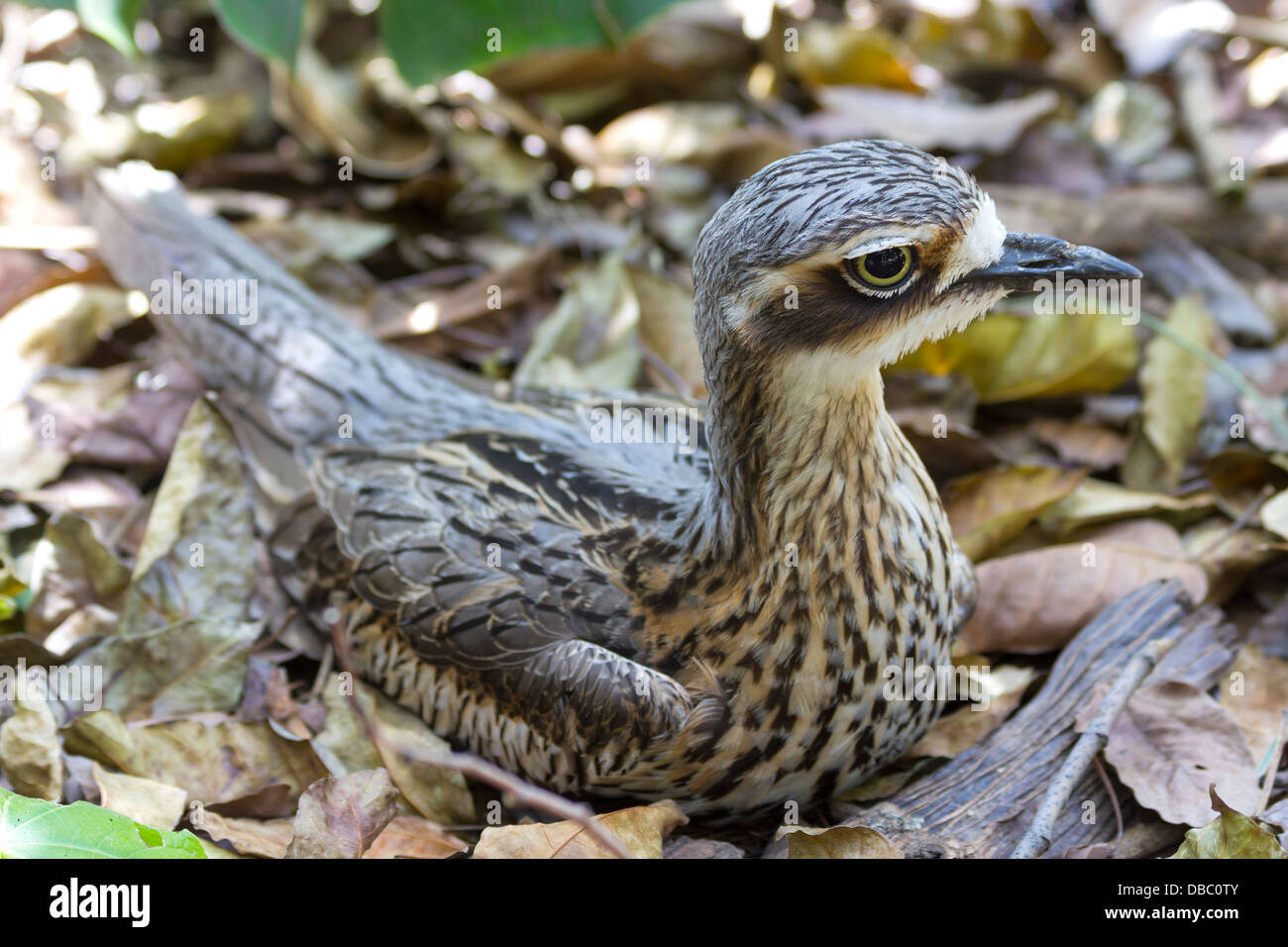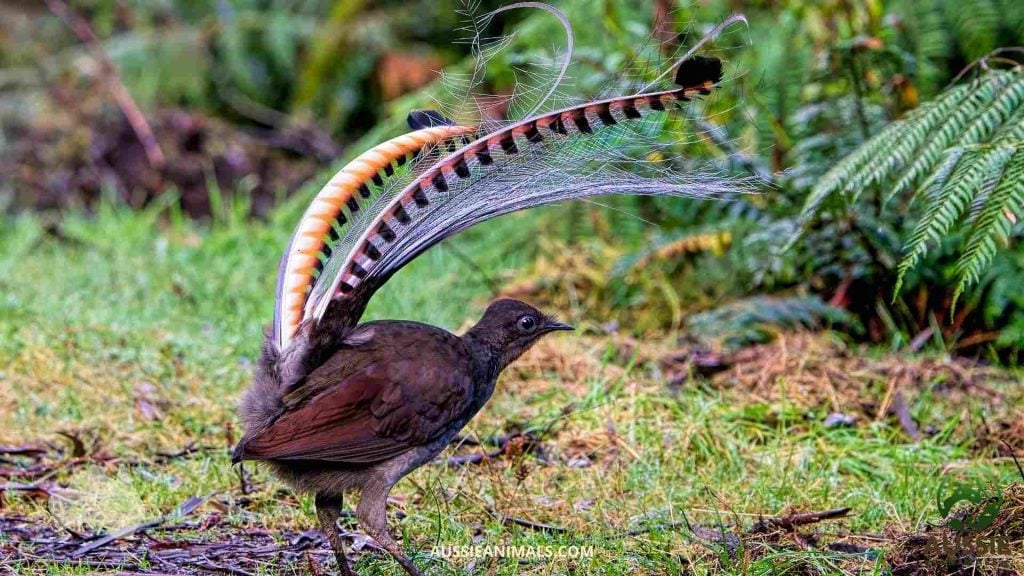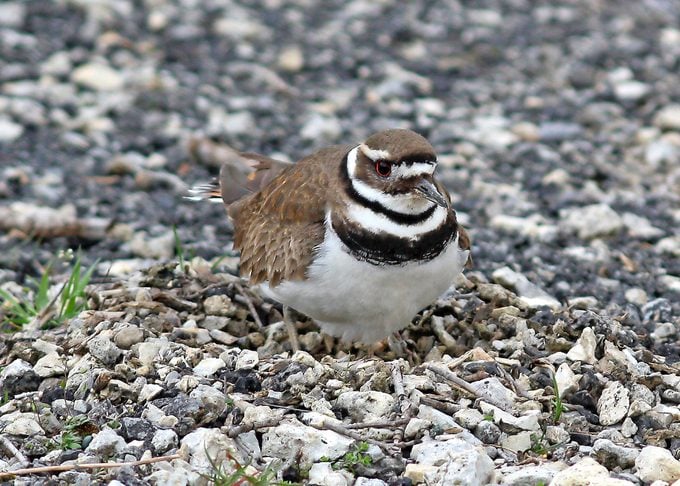Discovering Australian Ground Nesting Birds: Habitats, Behavior, and Conservation Efforts

Australia is home to a diverse array of ground-nesting birds, each uniquely adapted to thrive in their specific habitats. From the expansive wetlands to the arid outback, these birds exhibit fascinating behaviors that play a crucial role in their ecosystems. However, many species are facing increasing threats due to habitat loss, climate change, and predation. This article delves into the intricate world of Australian ground-nesting birds, exploring their habitats, behaviors, and the vital conservation efforts aimed at preserving these remarkable avian populations. Join us as we uncover the challenges and triumphs in safeguarding these essential members of Australia's natural heritage.
Understanding Australian Ground Nesting Birds
Australian ground nesting birds are a unique and essential part of the country's diverse ecosystem. These birds, such as the Bush Stone-curlew and the Plover, often build their nests directly on the ground rather than in trees, making them vulnerable to threats such as predation and habitat destruction. Their nesting behavior is adapted to the open habitats found in Australia, which include grasslands, savannas, and wetlands. The survival of these species is critical not only for maintaining biodiversity but also for ensuring the health of their respective environments. Conservation efforts are increasingly important as these birds face challenges from urbanization and climate change.
Habitats of Ground Nesting Birds
Ground nesting birds in Australia typically inhabit a variety of environments ranging from dry grasslands to wetlands. These habitats provide the necessary cover for nesting and foraging. Specific species are often adapted to particular types of vegetation and soil, which influence their nesting success and chick survival rates. Protection of these natural environments is crucial, as urban development can significantly reduce the available habitats for these birds.
Threats to Ground Nesting Birds
One of the main threats to Australian ground nesting birds is predation by introduced species such as cats and foxes. These predators often target eggs and chicks, leading to significant declines in population numbers. Additionally, habitat destruction due to agriculture and urban development further exacerbates the challenges these birds face. Climate change also poses a risk, affecting food availability and nesting conditions, thereby impacting their reproductive success.
Conservation Efforts
Conservation efforts for ground nesting birds in Australia include habitat restoration, protection of nesting sites, and management of invasive predator species. Organizations work to create protected areas and wildlife corridors that allow these birds to thrive. Public awareness campaigns also play an important role in educating communities about the significance of these unique birds and the need to conserve their habitats. Such efforts are essential for ensuring the long-term survival of these species.
Breeding and Nesting Behavior
Many Australian ground nesting birds exhibit unique breeding and nesting behaviors that help them adapt to their environments. For instance, the Bush Stone-curlew is known for its nest made of little more than a scrape in the ground, and its eggs are camouflaged to blend into the surroundings. Typically, these birds choose nesting sites based on cover and accessibility to food sources, ensuring their young have the best chance of survival. Their breeding strategies often involve crypsis, where the adult birds remain still to avoid detection from potential threats.
Importance of Ground Nesting Birds in Ecosystems
Ground nesting birds play a vital role in the ecosystems they inhabit, contributing to the seed dispersal and pest control in their environments. By consuming insects and other small invertebrates, they help maintain the balance of local food webs. Additionally, their nesting and feeding behaviors can influence vegetation patterns, affecting the broader community of plants and animals. Protecting these birds is therefore essential not only for their survival but for the health of entire ecosystems.
| Species | Habitat | Threats | Conservation Status |
|---|---|---|---|
| Bush Stone-curlew | Open grasslands and woodlands | Predation, habitat loss | Near Threatened |
| Masked Lapwing (Plover) | Urban areas, grasslands | Habitat destruction | Least Concern |
| Red-capped Plover | Beach and salt flats | Human disturbance, climate change | Vulnerable |
| Australian Painted Snipe | Wetlands and marshes | Habitat degradation | Endangered |
| Plains-wanderer | Grasslands and plains | Habitat loss, predation | Critically Endangered |
What Australian birds nest in the ground?

In Australia, several bird species are known to nest on the ground. These ground-nesting birds have adapted to their environments by developing behaviors and physical traits that enable them to remain camouflaged and safe from predators. Below are some notable examples:
1. Emus
Emus (Dromaius novaehollandiae) are the world's second-largest birds and are native to Australia. They typically nest on the ground in a simple scrape, where the female lays between 8 to 15 eggs. The males incubate the eggs for about 50 days, during which they do not eat and fiercely protect the nest from potential threats.
- Large, flightless birds.
- Lay eggs directly on the ground.
- Males are responsible for incubation.
2. Plovers
Plovers, such as the Masking Plover (Charadrius bibbonatus), have a unique nesting strategy. They create shallow depressions in sandy or gravelly areas, making it challenging for predators to spot their nests. The female usually lays about 3 to 4 eggs which are well-camouflaged in their surroundings.
- Known for their protective behavior towards young.
- Excellent at camouflage.
- Have a characteristic broken-wing display to distract predators.
3. Bush Stone-Curlews
The Bush Stone-Curlew (Burhinus grallarius) is another ground-nesting species found in a variety of habitats. They typically lay their eggs in a scrape on the ground, often among leaf litter or grass, making them difficult to locate. They rely on their highly evolved camouflage to evade predators.
- Active at night (nocturnal).
- Use camouflage to protect their nests.
- Produce a distinctive, eerie call at night.
4. Australian Pratincoles
The Australian Pratincole (Stiltia isabella) is a bird known for its distinctive appearance and ground-nesting habits. These birds prefer open grasslands, where they create shallow scrapes in the soil to lay their eggs. They are particularly vulnerable during the breeding season due to their nesting choices.
- Favors open habitats for nesting.
- Identified by their long wings and tail.
- Engages in elaborate aerial displays during courtship.
5. Red-capped Plovers
The Red-capped Plover (Charadrius ruficapillus) is a small wader that also nests on the ground. They prefer to build their nests on sandy shores, laying a clutch of 2 to 4 eggs. The pale color of the eggs helps them blend in with their surroundings, providing them a better chance against predators.
- Common in coastal regions.
- Has a distinctive reddish cap.
- Form strong pair bonds during the breeding season.
What birds build mounds in Australia?

Mound-building birds in Australia are primarily known for their unique nesting habits, where they construct large mounds of soil, vegetation, and other materials. The most notable birds that exhibit this behavior are the megapodes, also known as mound-builders. Here are some of the key species:
1. Malleefowl (Leporinus marmoratus)
The Malleefowl is one of the most well-known mound-building birds in Australia. It creates extensive nesting mounds that can reach up to 4 meters in diameter and 1 meter in height. These mounds are primarily composed of soil, leaf litter, and decaying plant materials. The Malleefowl uses the heat generated by the decomposition of organic materials to incubate its eggs. This method ensures a stable temperature for the developing chicks.
- Creates large and complex mounds.
- Utilizes organic heat for incubation.
- Distributes soil and debris meticulously for effective mound building.
2. Orange-footed Scrubfowl (Megapodius reinwardt)
The Orange-footed Scrubfowl is another prominent mound-builder found in Australia, especially in tropical rainforests and coastal areas. This species builds mounds that can be quite large and is known for its distinctive orange feet. Like the Malleefowl, it also relies on the heat generated from decomposing materials within its mound to incubate its eggs.
- Constructs mounds primarily in tropical regions.
- Distinguished by its orange feet.
- Relies on natural composting processes for incubation.
3. Brush Turkeys (Alectura lathami)
Brush Turkeys, or Scrub Turkeys, are known for their impressive mound-building skills as well. They create massive mounds using leaves, soil, and other organic materials, predominantly found in eastern Australia. The Brush Turkey is a key species within the ecosystem, as its mound-building activity helps aerate the soil and recycle nutrients.
- Commonly found in eastern Australian forests.
- Contributes to soil aeration and nutrient recycling.
- Just like other megapodes, it uses heat for incubation.
4. Asiatic Mound-builders (Megapodius spp.)
Various species of the Megapodius genus, primarily native to nearby regions, exhibit mound-building behavior similar to their Australian counterparts. These birds demonstrate a variety of mound sizes and nesting techniques, often influenced by their specific environmental conditions. Their remarkable adaptation showcases the evolutionary traits of megapodes in warm climates.
See also:
- Includes various species that build mounds.
- Adaptations vary based on habitat and climate.
- Contribute to ecosystem dynamics through nesting behavior.
5. Ecological Importance of Mound-building Birds
Mound-building birds play a crucial role in their ecosystems. They not only provide a unique breeding strategy for their young but also assist in enhancing the quality of soil and promoting biodiversity in their habitats. The mounds created by these birds can be utilized by other species for nesting or as sources of nutrients.
- Enhance soil quality through decomposition.
- Provide habitat for other organisms.
- Contribute to biodiversity stability in their environment.
What is the Australian ground dwelling bird fowl crossword?

The Australian ground dwelling bird fowl crossword clue typically refers to the emu. The emu is a large flightless bird native to Australia, recognized for its long legs and distinctive appearance. It is the second-largest living bird by height, after the ostrich. Emus are primarily found in various habitats across Australia, from forests to savannas and even coastal regions.
They are known for their characteristic behavior of running swiftly on the ground, where they can reach speeds of up to 30 miles per hour. Emus have a unique way of defending themselves by using their strong legs to kick predators. Additionally, they communicate with each other through a range of vocalizations, which include booming sounds that can be heard over long distances.
Characteristics of the Emu
The emu possesses several notable characteristics that differentiate it from other birds.
- Flightless: Unlike many birds, emus cannot fly due to their heavy bodies and small wings.
- Size: An adult emu can grow up to 6 feet tall and weigh around 120 pounds.
- Feeding Habits: Emus are omnivores, consuming a varied diet including fruits, seeds, flowers, and insects.
Habitat of the Emu
Emus are versatile birds that adapt to a variety of habitats across Australia.
- Woodlands: They thrive in forests and woodlands where they forage for food.
- Savannas: Emus are often found in open grasslands and savanna regions, which provide ample space for running.
- Coastal Areas: Some emus inhabit coastal zones, adapting to sandy and more humid environments.
Emus exhibit interesting behaviors and social interactions, particularly during the breeding season.
- Migration: They may migrate in search of food and water, especially during droughts.
- Breeding: Males are responsible for incubating the eggs and caring for the chicks after hatching.
- Social Bonds: Emus are often seen in small groups, showcasing social behavior among them.
Conservation Status
The emu is currently classified as a species of Least Concern by conservation organizations, but awareness is necessary.
- Population Trends: Their populations are generally stable, although habitat destruction poses threats.
- Legal Protections: There are laws protectingemus from hunting and habitat encroachment.
- Conservation Efforts: Various initiatives aim to monitor and protect their natural habitats.
Cultural Significance of the Emu
Emus hold a special place in Australian culture and Aboriginal traditions.
- National Symbol: The emu is one of Australia's national symbols, representing resilience and adaptability.
- Aboriginal Lore: Aboriginal Australians have cultural stories and artwork featuring emus, which reflect their significance.
- Tourism: Emus attract tourists, with many local attractions featuring them prominently.
What type of birds lay their nest on the ground?

Many species of birds prefer to build their nests on the ground for various reasons, often related to their feeding habits, behavior, and habitat preferences. Here are some notable types of birds that lay their nests on the ground:
1. Shorebirds
Shorebirds, also known as waders, are commonly found in coastal areas as well as inland wetlands. They typically nest on the ground in sandy or gravelly locations, which provide camouflage from predators. These birds include:
- Plovers - Known for their short bodies and long legs, plovers often nest in small scrapes made in the sand.
- Sandpipers - These birds usually prefer moist environments and lay their eggs in shallow depressions.
- Godwits - With long bills, godwits typically nest in marshy areas where their camouflaged nests can easily go unnoticed.
2. Ground-Nesting Songbirds
Many songbirds choose to nest on the ground. These birds often prefer areas with dense vegetation that provides cover from predators. Some common examples include:
- American Robin - Although they often build nests in trees, they can also nest on the ground, especially in suburbia.
- Ovenbird - This bird is known for its distinctive nest, which is shaped like an oven and is built on the forest floor.
- Song Sparrow - Typically found in grassy or shrubby areas, they make their nests well-camouflaged on the ground.
3. Game Birds
Game birds are a category that includes species that are often hunted for sport. Many of these birds build their nests on the ground, utilizing the cover of grass or brush. Key examples include:
- Quail - Highly secretive, quail usually nest in tall grass or scrub and lay eggs in a simple scrape.
- Pheasants - These birds typically nest in grassy fields and are known to create a depression in the ground.
- Wild Turkey - They nest in open woodlands, laying eggs on the ground amid leaf litter or grasses.
4. Seabirds
Some seabirds also choose to nest on the ground, particularly on islands or remote coastal areas where they can reduce predation risk. Examples include:
- Albatross - Many species build their nests on grass-covered slopes or cliffs, making use of the sparse vegetation.
- Puffins - These burrowing seabirds often dig out nesting burrows in soil or cliff faces.
- Gulls - Certain gull species like the western gull will nest on the ground in rocky or sandy areas.
5. Raptors and Large Birds
While most raptors prefer elevated nesting sites, some larger birds may still opt for ground nesting under specific circumstances. These include:
- Osprey - Occasionally, they build nests near water on the ground or near ground level when suitable trees are not available.
- Kites - Certain species, like the black kite, might nest on the ground in open areas where vegetation is sparse.
- Grouse - Ground-dwelling birds that nest in heath or forest clearings often build nests in scrapes lined with grass and feathers.
Questions from Our Readers
What are Australian ground nesting birds?
Australian ground nesting birds are various species that build their nests on the ground rather than in trees or shrubs. These birds typically have adapted to Australia’s unique habitats and ecological conditions. Examples include the bush stone-curlew, emu, and plover, which often camouflage their nests among grasses and underbrush to protect their eggs from predators.
Why are ground nesting birds important to the ecosystem?
Ground nesting birds play a crucial role in the ecosystem by helping to maintain biodiversity and contributing to the control of insect populations. Their nesting habits also influence plant growth through seed dispersion and soil aeration, ultimately supporting a healthy ecosystem balance.
What threats do Australian ground nesting birds face?
These birds face several threats, including habitat loss, predation by introduced species such as cats and foxes, and human activities such as land development and agriculture. The decline in suitable nesting sites and increased disturbance during critical breeding periods greatly impacts their populations.
What conservation efforts are in place for ground nesting birds in Australia?
Conservation efforts for ground nesting birds in Australia include habitat protection, restoration projects, and public awareness campaigns aimed at reducing human interference. Additionally, various organizations work to monitor bird populations, protect nesting sites, and advocate for legislation that ensures the preservation of these unique species and their habitats.
See also:

If you want to read more articles like Discovering Australian Ground Nesting Birds: Habitats, Behavior, and Conservation Efforts, we recommend you check out our Ninguna de las categorías es adecuada para el artículo. category.
Leave a Reply
Related Articles